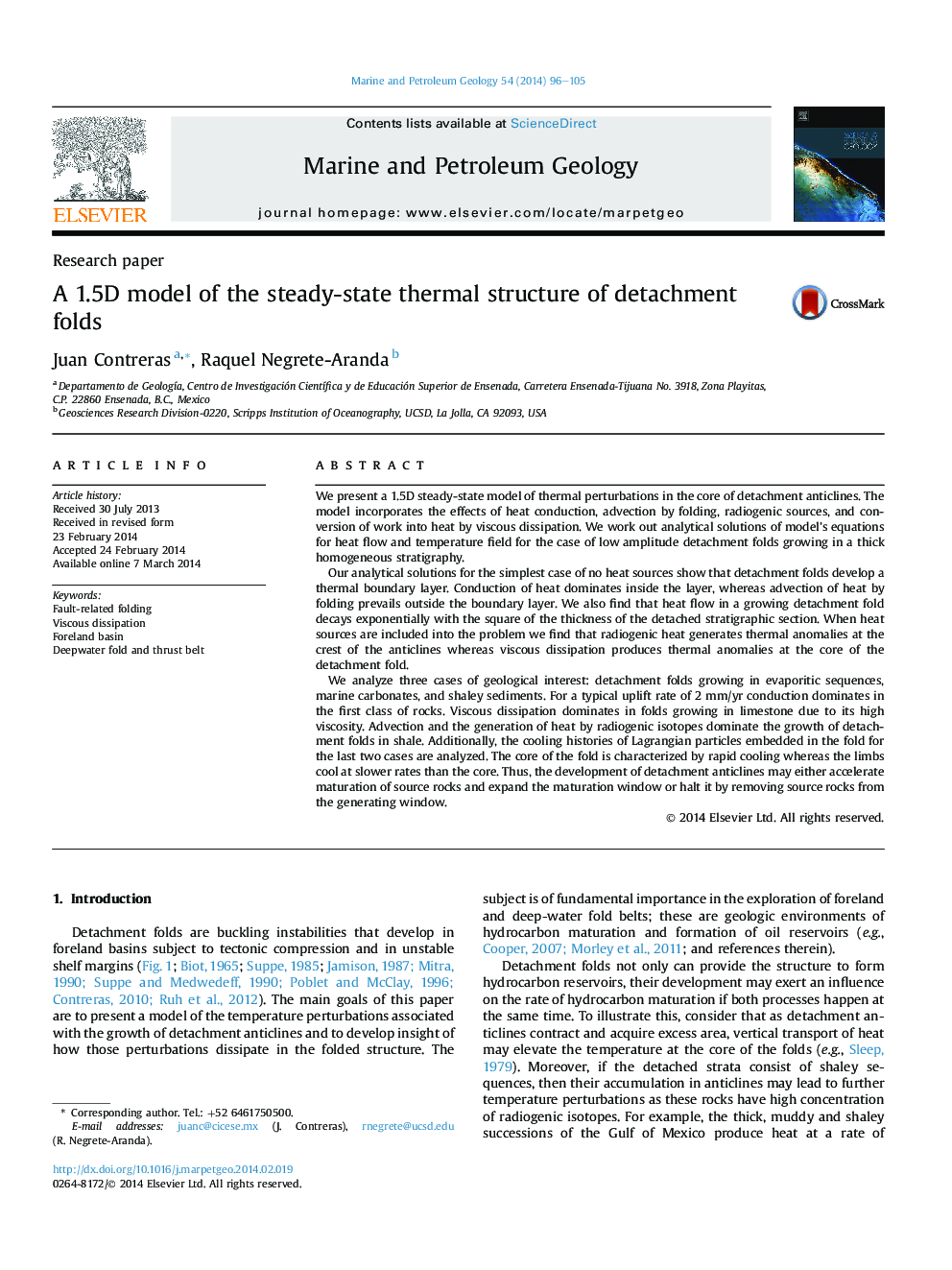| کد مقاله | کد نشریه | سال انتشار | مقاله انگلیسی | نسخه تمام متن |
|---|---|---|---|---|
| 4695577 | 1637170 | 2014 | 10 صفحه PDF | دانلود رایگان |

• We present a 1.5D model of the steady-state thermal structure of detachment folds.
• Folds growing in evaporites, marine carbonates, and shaley sediments are analyzed.
• Detachment anticlines may either accelerate maturation of source rocks or halt it.
We present a 1.5D steady-state model of thermal perturbations in the core of detachment anticlines. The model incorporates the effects of heat conduction, advection by folding, radiogenic sources, and conversion of work into heat by viscous dissipation. We work out analytical solutions of model's equations for heat flow and temperature field for the case of low amplitude detachment folds growing in a thick homogeneous stratigraphy.Our analytical solutions for the simplest case of no heat sources show that detachment folds develop a thermal boundary layer. Conduction of heat dominates inside the layer, whereas advection of heat by folding prevails outside the boundary layer. We also find that heat flow in a growing detachment fold decays exponentially with the square of the thickness of the detached stratigraphic section. When heat sources are included into the problem we find that radiogenic heat generates thermal anomalies at the crest of the anticlines whereas viscous dissipation produces thermal anomalies at the core of the detachment fold.We analyze three cases of geological interest: detachment folds growing in evaporitic sequences, marine carbonates, and shaley sediments. For a typical uplift rate of 2 mm/yr conduction dominates in the first class of rocks. Viscous dissipation dominates in folds growing in limestone due to its high viscosity. Advection and the generation of heat by radiogenic isotopes dominate the growth of detachment folds in shale. Additionally, the cooling histories of Lagrangian particles embedded in the fold for the last two cases are analyzed. The core of the fold is characterized by rapid cooling whereas the limbs cool at slower rates than the core. Thus, the development of detachment anticlines may either accelerate maturation of source rocks and expand the maturation window or halt it by removing source rocks from the generating window.
Figure optionsDownload as PowerPoint slide
Journal: Marine and Petroleum Geology - Volume 54, June 2014, Pages 96–105